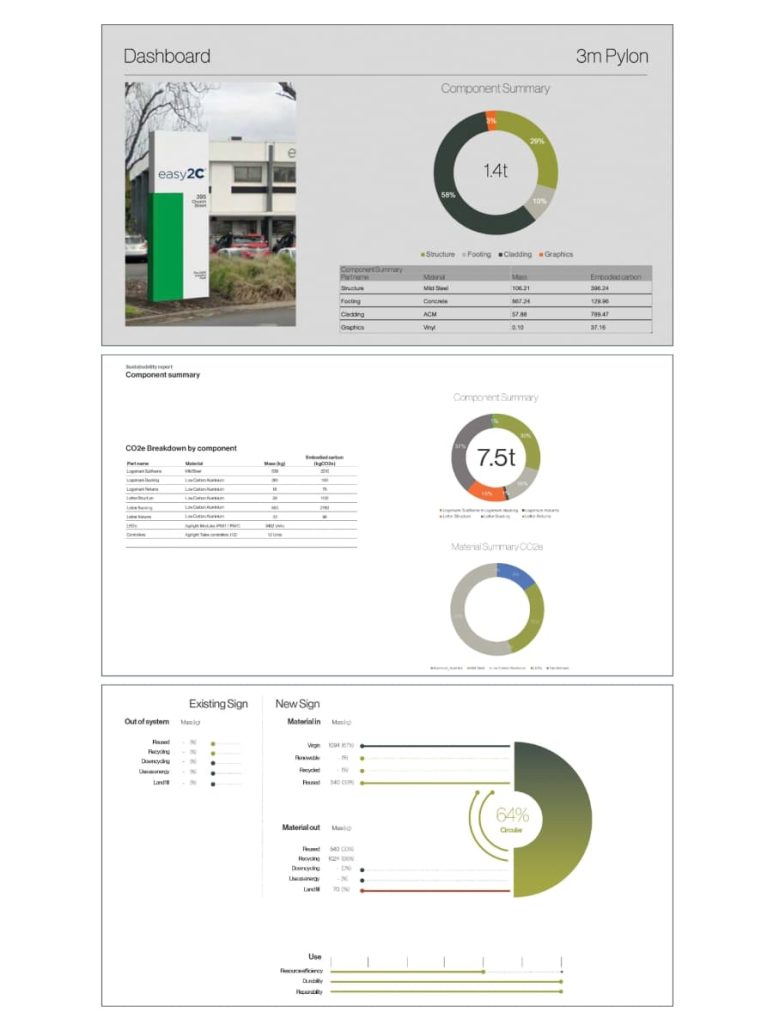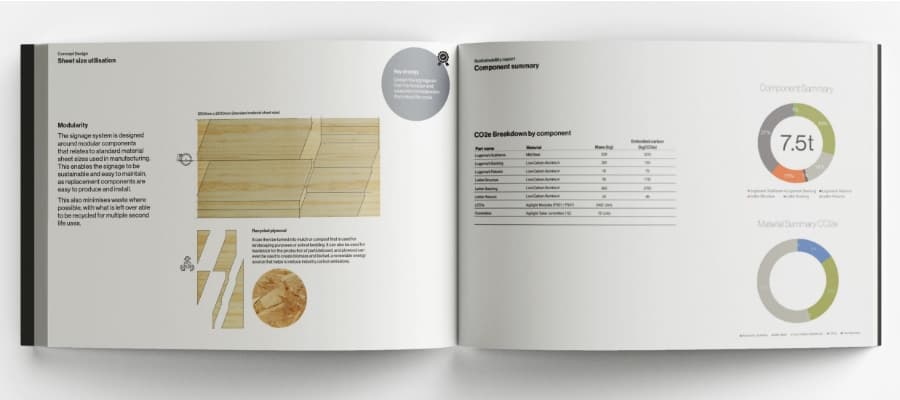Sustainability today is at the top of the agenda in every boardroom worldwide as organisations seek ways to reduce their environmental impact. The challenge for clients is where to start. What is their current carbon liability, and how do you reduce it?
At Diadem, we have always been conscious of using materials in our projects, trying to find the right balance between aesthetics and performance. However, the problem is more complex. As an industry leader, we were compelled to set a higher ambition to help our clients tackle these challenges, even though we didn’t have all the answers.
Sustainable by design, our commitment
In 2020 we set out on a path to accelerate and improve our understanding of environmental sustainable design (ESD). One outcome of this mission was the development of an industry-first embodied carbon modelling application.
Today, we use this modelling application in many large-scale projects. Reducing just a few kilograms of embodied carbon in a design can save many tonnes of CO2e across a larger project. This is the kind of meaningful impact we are striving for.

Carbon Calculator Report
As part of our modelling methodology, measuring carbon is only one aspect. Through our early work, we discovered that understanding the full project lifecycle was vital to the project’s destiny. So, we started to unpack organisational factors to uncover who, where and when decisions are made that influence the outcome. This involves distilling all of the operational aspects of projects, from understanding stakeholders and departmental priorities to operational processes and end users.
With this deeper context combined with our modelling application, our designers and procurement teams can design more sustainable products and optimise product life, even aiming for circular economy solutions.

Project – Rotorua City Wayfinding
Partnering with the supply chain is also vital to this process. Sustainability can only be truly fulfilled when clients, designers, and suppliers collaborate to achieve ambitious outcomes.
Using our carbon modelling application during the concept design phase, our designers can observe the impact that different materials can have, visibly providing smarter, more effective choices. They consider not only materials but also assembly, serviceability, disassembly, and the potential for re-purpose.
As new sustainable materials and processes become available, the gains in carbon reduction will become exponential, but how do you anticipate and factor in such future changes?
At Diadem, we aspire to make our clients’ projects more sustainably responsible with this holistic approach. To be meaningful, the ability to measure and report the embodied carbon (CO2e) and global warming potential (GWP) is vital in understanding the amount of reduction over the lifetime of products.
Ultimately, our ambition is to support our clients and suppliers in embracing the broader partnerships needed to drive the wider system changes – necessary changes that will provide long-term benefits to society.





















